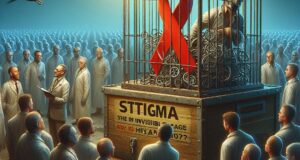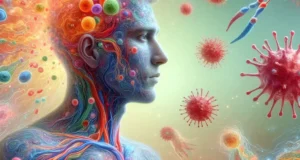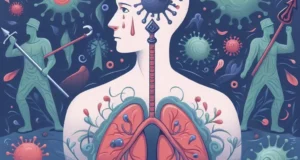Imagine you’re standing on a cliff, overlooking a vast, peaceful ocean. Suddenly, you spot a ripple far in the distance—a disturbance no one else notices. That ripple grows into a monstrous wave, heading for the shore. You scream to warn the world. This is what the CDC (Centers for Disease Control) experienced in the early 1980s—except the ripple wasn’t water, it was AIDS.

Back then, no one knew where this mysterious illness came from. People were suddenly falling severely ill—young, otherwise healthy men were developing rare infections and cancers like Kaposi’s sarcoma and Pneumocystis pneumonia. The question on everyone’s lips became: AIDS, where did it come from?
The CDC first noticed this anomaly in June 1981, when its Morbidity and Mortality Weekly Report (MMWR) published a brief yet groundbreaking note: five gay men in Los Angeles were diagnosed with Pneumocystis pneumonia, a disease that typically only affects individuals with severely weakened immune systems. This seemingly minor report would go on to be recognized as the first official documentation of what would become the AIDS epidemic.
To better understand the role of the CDC, think of it as a national radar system. It constantly scans the health landscape of the U.S., detecting early signs of disease outbreaks. Just as a radar might pick up the earliest signs of a hurricane, the CDC detected the “viral storm” long before it had a name. The agency didn’t just see the danger—it dove into action, launching investigations, gathering data, and tracking the mysterious illness that was taking lives without mercy.
But even as they worked to understand the symptoms and demographics, the burning question remained: AIDS, where did it come from?
Tracing the origins of AIDS was like following a trail through a dense, dark jungle. The CDC helped uncover some key clues. The cases initially appeared among gay men, which led to harmful early assumptions and stigma. But soon, people with hemophilia, intravenous drug users, and even infants began showing similar symptoms. This led researchers—guided in part by CDC data—to realize that this wasn’t a disease limited by lifestyle. It was a virus, and it could infect anyone.

Eventually, in 1983, scientists identified the human immunodeficiency virus (HIV) as the cause of AIDS. From there, the mystery of “AIDS where did it come from” began to unravel. The virus had crossed into humans from chimpanzees in Central Africa, likely through the hunting and butchering of bushmeat. Studies of stored blood samples and genetic analysis confirmed that HIV had likely been circulating in human populations for decades before the CDC picked up the signal.
Still, the CDC’s role cannot be overstated. It was the first agency to ring the alarm, to document patterns, and to apply epidemiological methods that would later help save millions of lives. It transformed from a silent observer into a commanding voice in the public health response—issuing guidelines, funding research, and collaborating globally to combat the spread.
In a way, the CDC was the lighthouse as the world sailed into uncharted waters. And although the waves of the AIDS epidemic crashed hard and wide, that early beacon made all the difference in alerting the world and starting the search for answers.
we must also remember who first asked that question on behalf of the world. The CDC didn’t have all the answers in 1981, but it had the courage to ask, to investigate, and to tell the truth. And that changed everything.




